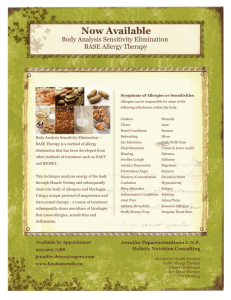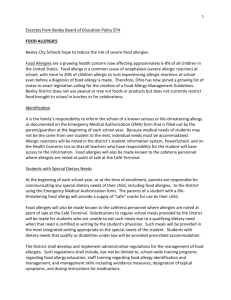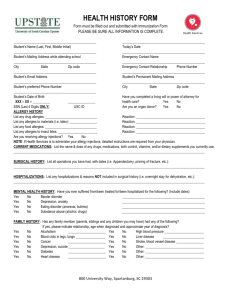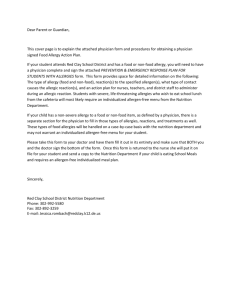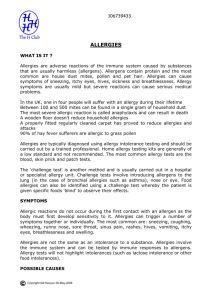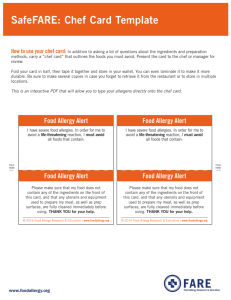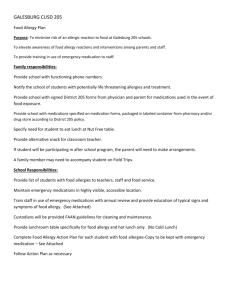Managing Food Allergies - West Virginia School Nutrition Association
advertisement
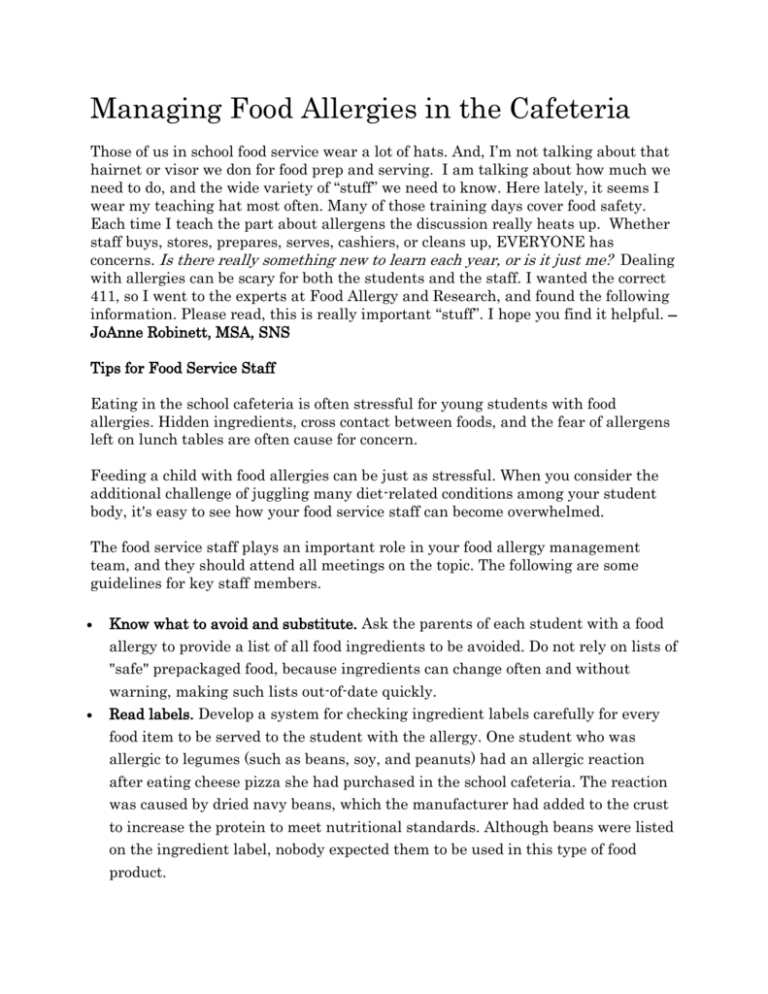
Managing Food Allergies in the Cafeteria Those of us in school food service wear a lot of hats. And, I’m not talking about that hairnet or visor we don for food prep and serving. I am talking about how much we need to do, and the wide variety of “stuff” we need to know. Here lately, it seems I wear my teaching hat most often. Many of those training days cover food safety. Each time I teach the part about allergens the discussion really heats up. Whether staff buys, stores, prepares, serves, cashiers, or cleans up, EVERYONE has concerns. Is there really something new to learn each year, or is it just me? Dealing with allergies can be scary for both the students and the staff. I wanted the correct 411, so I went to the experts at Food Allergy and Research, and found the following information. Please read, this is really important “stuff”. I hope you find it helpful. – JoAnne Robinett, MSA, SNS Tips for Food Service Staff Eating in the school cafeteria is often stressful for young students with food allergies. Hidden ingredients, cross contact between foods, and the fear of allergens left on lunch tables are often cause for concern. Feeding a child with food allergies can be just as stressful. When you consider the additional challenge of juggling many diet-related conditions among your student body, it's easy to see how your food service staff can become overwhelmed. The food service staff plays an important role in your food allergy management team, and they should attend all meetings on the topic. The following are some guidelines for key staff members. Know what to avoid and substitute. Ask the parents of each student with a food allergy to provide a list of all food ingredients to be avoided. Do not rely on lists of "safe" prepackaged food, because ingredients can change often and without warning, making such lists out-of-date quickly. Read labels. Develop a system for checking ingredient labels carefully for every food item to be served to the student with the allergy. One student who was allergic to legumes (such as beans, soy, and peanuts) had an allergic reaction after eating cheese pizza she had purchased in the school cafeteria. The reaction was caused by dried navy beans, which the manufacturer had added to the crust to increase the protein to meet nutritional standards. Although beans were listed on the ingredient label, nobody expected them to be used in this type of food product. Prepare the kitchen. Designate an area in the kitchen where allergy-free meals can be prepared. This area should be a "safe zone" and kept free of ingredients allergic students should avoid. Identify the student. When working with younger children, consider how students with food allergies will be identified when moving through the cafeteria line so that someone can ensure the selected food is safe. Some schools require that these students identify themselves to food service staff; others specially code lunch tickets as a way of alerting staff to a food allergy. One school identified a student with an allergy by taping his picture to the cash register. Most schools manage the allergy alert with their POS system. Develop cleaning procedures. Designate a person to be responsible for ensuring that lunch tables and surrounding areas are thoroughly cleaned before and after lunch. Use a designated sponge or cleaning cloth for the allergy-free tables to avoid cross contact. Finally, it's the school's responsibility to serve the food; it is the parents' responsibility to teach you what their child can or cannot eat. Don't hesitate to ask questions. Success is achieved by working in partnership with the child's parents and the student who has food allergies. Often the school nurse is the liaison in this partnership. Used with permission, Food Allergy Research & Education (FARE) http://www.foodallergy.org/schools/cafeteria, 8/13/2013 Contributed by JoAnne Robinett, MSA, SNS. Owner of America’s Meal, a company delivering training and inspiration to child nutrition programs and Associations across the country. ServSafe Certified trainer. Visit AMERICASMEAL.COM for more info and to book an appearance! Check out the New Keynote session: “Using Your Superpowers to Change the World!” She can be reached at americasmeal@yahoo.com



